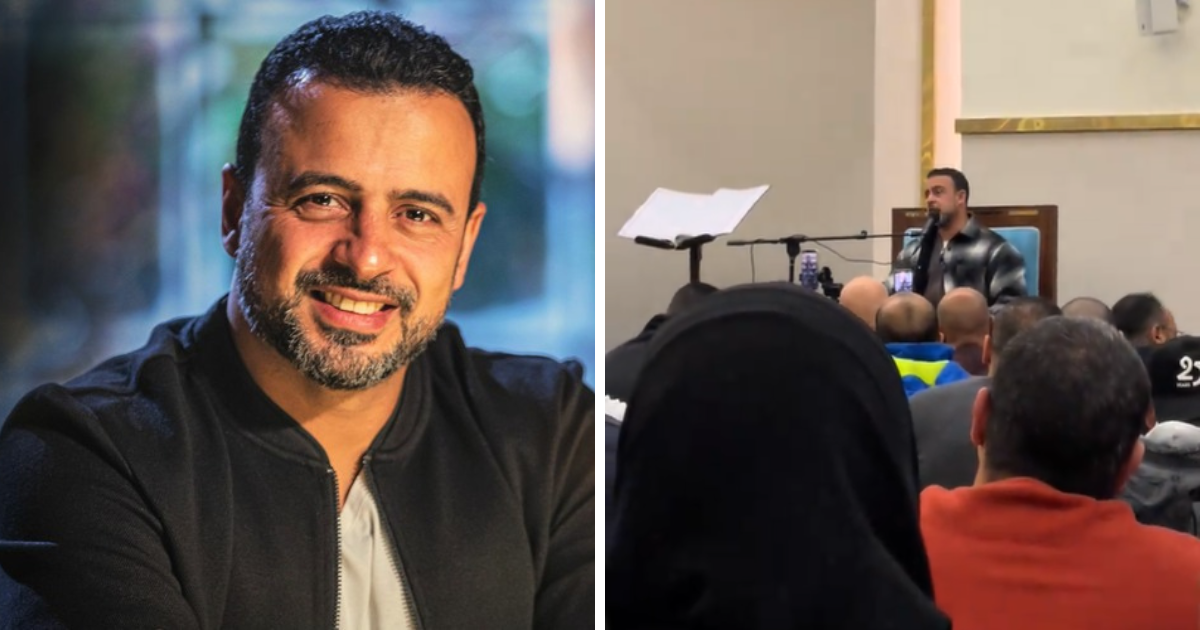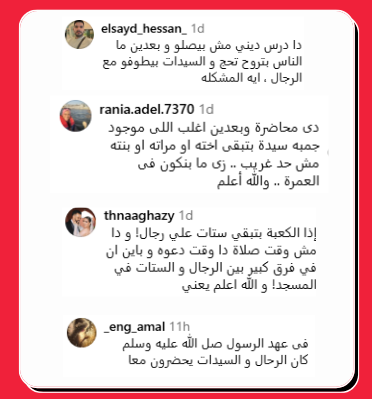Minimum custom amount to enter is AED 2
By donating, you agree to the Privacy Policy and Terms of Service

Ramadan is often a time for reflection, spiritual growth, and the sharing of wisdom. For many, Mustafa Hosny’s Ramadan lessons have become a familiar and cherished tradition.
Known for his deep and meaningful reflections on faith and life, his lessons typically occur in private homes or community centers, where people gather to listen and learn.
However, this year, one of Mustafa Hosny’s Ramadan lessons sparked a debate that has caught the attention of many—and it wasn’t his words that got people talking, but rather the setting and the format of the lesson itself.
The lesson in question took place in a mosque, a religious setting that has traditionally been reserved for prayer, worship, and reflection. However, this time, the gathering was different.
The seating arrangement was mixed, with men and women sitting together. This departure from the usual norms of gender separation in mosques became the focal point of the conversation, with many people voicing strong opinions about the appropriateness of such an arrangement.
In many religious settings, particularly in mosques, it is customary for men and women to be seated separately. This practice has been in place for centuries and is often seen as a way to maintain focus and preserve the sanctity of prayer and religious gatherings.
As a result, the sight of mixed seating in a mosque for a lesson—especially during the holy month of Ramadan—raised eyebrows and sparked controversy.
Some people felt that holding such a gathering in a mosque with mixed seating was disrespectful, undermining the sacredness of the space. For them, the decision to blur the lines of traditional gender separation in a religious setting was seen as crossing a boundary that should not be tested, especially in the presence of such deep spiritual significance.

But others saw the mixed seating arrangement as perfectly acceptable. For them, the idea of a mixed-gender setting in a mosque was not only normal but also a step towards modernizing how we engage with religious teachings.
They pointed out that the mosque is a place where people gather to learn, reflect, and connect, and that the essence of the lesson should be prioritized over the format or setting.

Some observers compared the mixed seating to other religious gatherings that occur outside the mosque, such as lessons held during ʿUmrah, the Islamic pilgrimage to Mecca, where men and women are often seen together in mixed settings without controversy.
In these instances, the focus is on the spirituality and the shared experience of faith rather than on rigidly adhering to traditional seating norms.
Next: The Ultimate Eid guide: 19 parties and events you don’t wanna miss!
Minimum custom amount to enter is AED 2
By donating, you agree to the Privacy Policy and Terms of Service